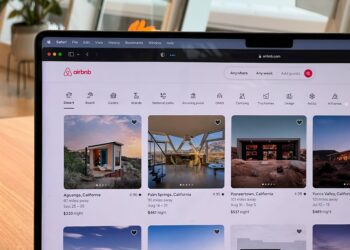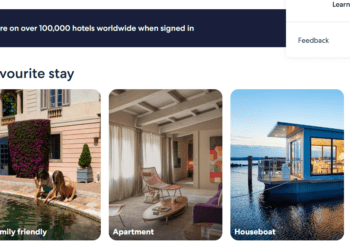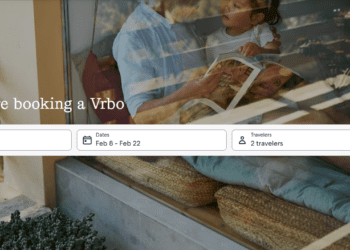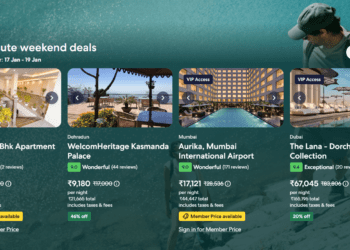Welcome to the ultimate guide on how to write engaging blog posts that captivate your audience and keep them coming back for more! Whether you’re a seasoned blogger looking to spice up your content or a newbie just dipping your toes into the blogging world, this guide is packed with tips and tricks to help you craft compelling posts that resonate with your readers. From understanding your target audience to incorporating personal stories and examples, we’ve got you covered. So grab a cup of coffee, sit back, and let’s dive in!
Understanding Your Target Audience
When it comes to writing engaging blog posts, one of the first steps is understanding your target audience. Take the time to research and analyze who your readers are – their interests, preferences, and pain points. By knowing your audience inside out, you can tailor your content to resonate with them on a deeper level.
Create detailed buyer personas to represent different segments of your audience. Dive into demographics, psychographics, and behavior patterns to paint a clear picture of who you’re writing for. This will help you address their specific needs and deliver value through your blog posts.
Engage with your audience through surveys, social media interactions, or comments on previous posts. Listen to their feedback and take note of what resonates with them the most. By actively communicating with your readership, you can build stronger connections and create content that truly speaks to them.
Choosing a Captivating Title
When it comes to writing a captivating blog post, one of the most crucial elements is choosing an attention-grabbing title. Your title is the first thing that your readers will see, so it needs to be compelling enough to make them want to click and keep reading.
A captivating title should pique curiosity, evoke emotion, or promise value to the reader. Think about what would intrigue you if you were scrolling through a list of blog posts – what would make you stop and click?
Consider using power words, numbers, or asking a thought-provoking question in your title. This can help draw readers in and entice them to learn more about what you have to say.
Remember that your title sets the tone for your entire blog post, so take some time to brainstorm different options before settling on one that truly captures the essence of your content. A great title can make all the difference in whether or not someone decides to read what you’ve written.
Creating a Hook with an Introduction
When it comes to writing engaging blog posts, the introduction is your chance to hook your readers from the start. A compelling introduction sets the tone for the rest of your content and entices people to keep reading.
Start off with a thought-provoking question or a bold statement that grabs attention. You want to pique curiosity and make readers curious about what you have to say next.
Another effective way to create a hook is by sharing an interesting fact or statistic related to your topic. This can intrigue readers and make them eager to learn more about the subject at hand.
Consider beginning with a personal anecdote or story that relates to your main point. Connecting on a human level can draw readers in and make them feel more invested in what you have to say.
Remember, the goal of your introduction is not only to introduce the topic but also to captivate your audience right away. Take time crafting this crucial part of your blog post for maximum impact!
Crafting Attention-Grabbing Subheadings
Crafting Attention-Grabbing Subheadings is a crucial aspect of creating engaging blog posts. Subheadings help break down the content into easily digestible sections and guide readers through the article. When crafting subheadings, it’s essential to be concise yet descriptive, giving readers a preview of what to expect in each section.
One effective technique is to use action verbs or pose questions in your subheadings to pique the reader’s curiosity. This can create intrigue and compel them to continue reading further. Additionally, incorporating keywords related to your topic can also improve SEO and attract relevant traffic to your blog post.
Another strategy is to make use of numbers or lists in your subheadings, as they tend to grab attention and make the content more scannable for readers. By breaking down information into bullet points or steps, you provide a clear structure that enhances readability.
Crafting attention-grabbing subheadings not only improves the visual appeal of your blog post but also plays a significant role in enticing readers to engage with your content from start to finish.
Using Visuals to Enhance Your Content
Adding visuals to your blog posts can take your content to the next level. Images, infographics, and videos can help break up text-heavy sections and make your content more visually appealing. Visuals not only grab readers’ attention but also help convey complex information in a more digestible way.
When selecting visuals for your blog post, ensure they are relevant to the topic and complement the written content. High-quality images and graphics can enhance the overall look of your post and leave a lasting impression on your audience. Remember that visuals should support your message and add value to the reader’s experience.
Infographics are great for presenting data or statistics in an engaging format, while videos can provide additional context or demonstrate concepts effectively. Including visual elements in your blog posts shows that you’ve put effort into creating valuable content for your audience. So next time you write a blog post, consider incorporating visuals to captivate your readers!
Incorporating Personal Stories and Examples
When it comes to writing engaging blog posts, incorporating personal stories and examples can truly set your content apart. Readers love to connect with the human element behind the words on their screen. Sharing personal anecdotes allows them to relate to your experiences, making your content more relatable and memorable.
By weaving in real-life examples, you add depth and authenticity to your writing. Whether you’re sharing a success story or a lesson learned from a mistake, these instances help illustrate your points in a way that resonates with readers on a personal level.
Personal stories also have the power to evoke emotions in your audience. When people feel connected emotionally, they are more likely to be engaged and invested in what you have to say. So don’t shy away from sharing those impactful moments that shaped your perspective or taught you valuable lessons.
Remember, when incorporating personal stories and examples into your blog posts, aim for relevance and authenticity. Your unique voice is what will make your content stand out amidst the sea of information online.
Keeping the Content Concise and Easy to Read
When it comes to writing engaging blog posts, keeping your content concise and easy to read is crucial.
Long paragraphs can overwhelm readers, so break up your text into shorter chunks. This not only makes it easier on the eyes but also encourages readers to keep scrolling.
Use simple language and avoid unnecessary jargon. Your goal is to communicate effectively with your audience, so clarity should always be a top priority.
Bullet points and lists are great ways to present information in a clear and organized manner. They help readers grasp key points quickly without getting lost in lengthy paragraphs.
Remember that less is often more when it comes to writing. Be ruthless in cutting out any fluff or repetitive information that doesn’t add value to your post.
By keeping your content concise and easy to read, you’ll create a more enjoyable reading experience for your audience while ensuring they absorb the important messages you want to convey.
Encouraging Reader Interaction and Comments
Once you have crafted a compelling blog post that is tailored to your target audience, grabbed their attention with an engaging title and introduction, utilized subheadings effectively, incorporated visuals and personal stories, and kept the content concise and easy to read, it’s time to encourage reader interaction.
One of the most rewarding aspects of blogging is fostering a sense of community with your readers. Encourage them to leave comments sharing their thoughts, experiences, or questions related to the topic. Respond promptly to comments to show that you value their input and engagement.
Additionally, consider ending your blog post with a thought-provoking question or call-to-action that prompts readers to share their own insights or experiences on social media platforms. Creating a dialogue not only strengthens your relationship with your audience but also provides valuable feedback for future content creation.
Remember, successful blogging is not just about writing great content but also about building connections with your readers. By encouraging reader interaction and comments, you can create a vibrant online community around your blog that will keep readers coming back for more.























